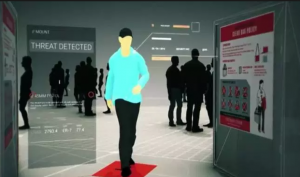Feeling safer?

In today’s world there is ample reason to want to feel secure in any environment or situation. More each day we hear about violent acts where humans are killed and wounded. Debates rage on about how to prevent or reduce all this mayhem by:
- limiting access to excessively dangerous weapons
- conducting careful analysis and investigation of terrorist activities
- countering the dissatisfactions and/or beliefs that fuel violence
- increasing the amount and scope of surveillance in public areas
Public areas and venues are a favourite target for extremist violence, as the perpetrators want to deliver their message in as shocking a way as possible and thus garner world news headlines. As these events grow in number and severity, perhaps the perpetrators feel that their message is getting through to the masses.
So it is not surprising that there is a large increase in the amount of surveillance being conducted by governments and police authorities around the world. The United Kingdom (UK) has seen a very large recent increase in video surveillance, with cameras deployed in areas around schools, hospitals, and care homes. Current estimate is that there is now one camera for every 14 UK residents.
Other areas being more heavily watched include airports and stadiums, which have an inherent need to conduct the surveillance in both a timely and an efficient way. Several technologies are being deployed and developed to meet the need. The newest surveillance and security systems use technologies that can make use of Facial Recognition, 3D CT scans, and walk-through scanners. Each technology and system has features that can be controversial:
- Facial recognition systems use software to quickly identify each person in camera range, and some systems will then track each person if the system identifies that the person has the characteristics that demand close watching. Some feel that this is an invasion of privacy that goes beyond what is required for good security.
- 3D CT scans are used primarily for scanning luggage, using multiple X-rays to detect dangerous items. We are all probably quite familiar with the scanning of checked and carry-on luggage and have come to accept its usefulness.
- Walk-through scanners are relatively new and the latest developments hold the promise of fast and efficient security. The older full-body scanners required that the subject stand still and hold a pose, while the scanner has a look at everything, to ensure that all is well. The walk-through scanners can now do all of that without the subject having to stand still – everyone just walks through the portals. This walk-through capability is especially desirable at stadiums, where people want to be in their seats to enjoy their entertainment without hassle or delay at the entrance gate for onerous security checks.
What these systems mostly have in common is that there are humans viewing all the images, sometimes with assistance from Artificial Intelligence (AI) systems telling them which subjects to pay more attention to. What may be a significant improvement is to use a system that will independently analyze each scan or image, noticing any threat and reporting that threat to a human. This could well be the way we can achieve security that is efficient and not a threat to, or invasion of, personal privacy. Walk-through scanners have been developed that will do just that. They will soon be set up in test locations, and we will be watching.
Trend Disruptors is monitoring these developments, and will be recommending companies to invest in that will lead to success for savvy investors.
Stay tuned!
